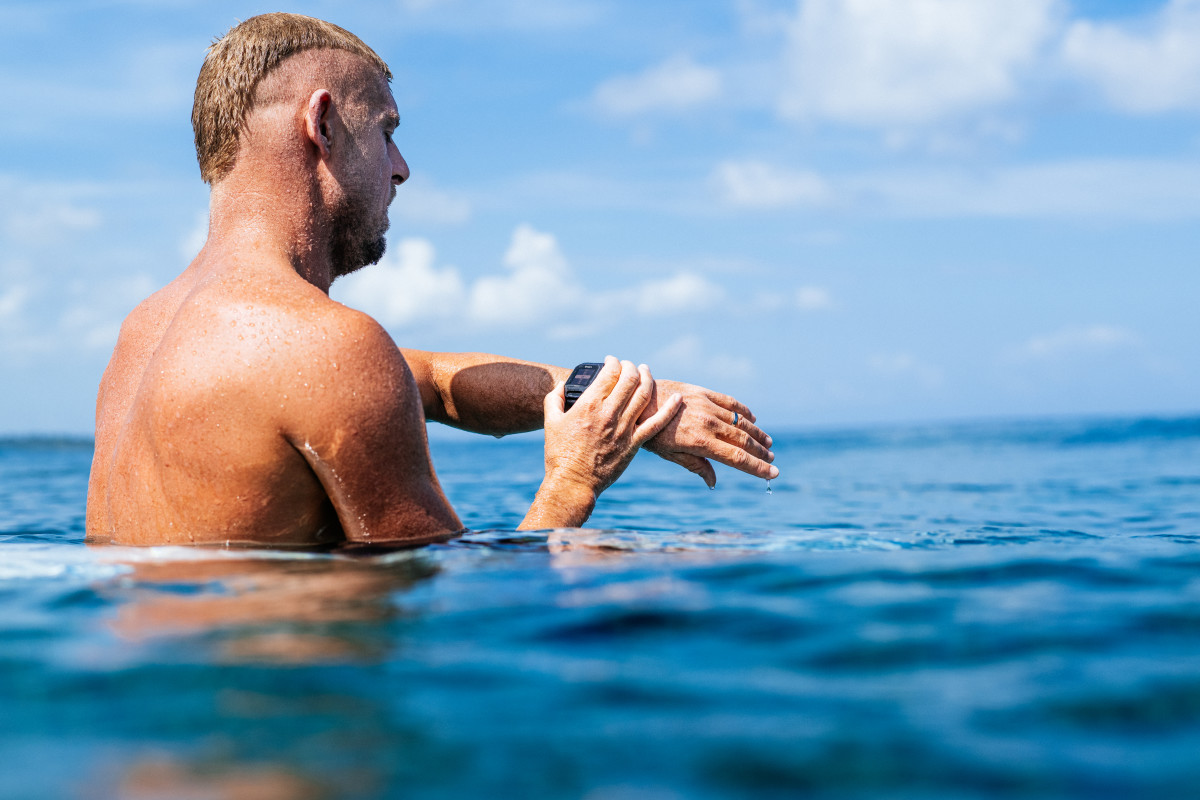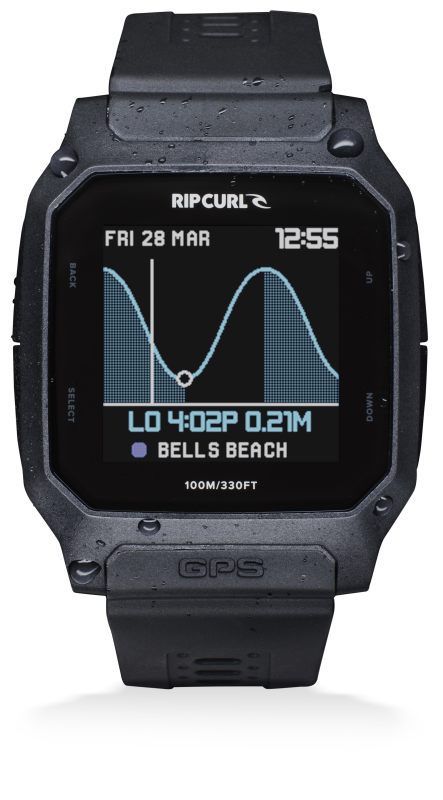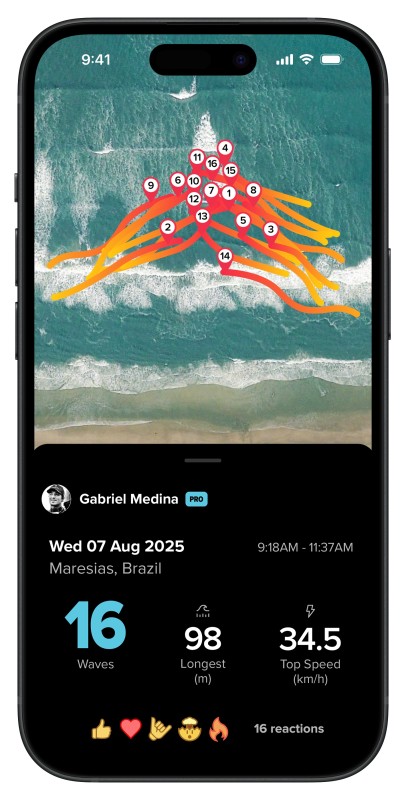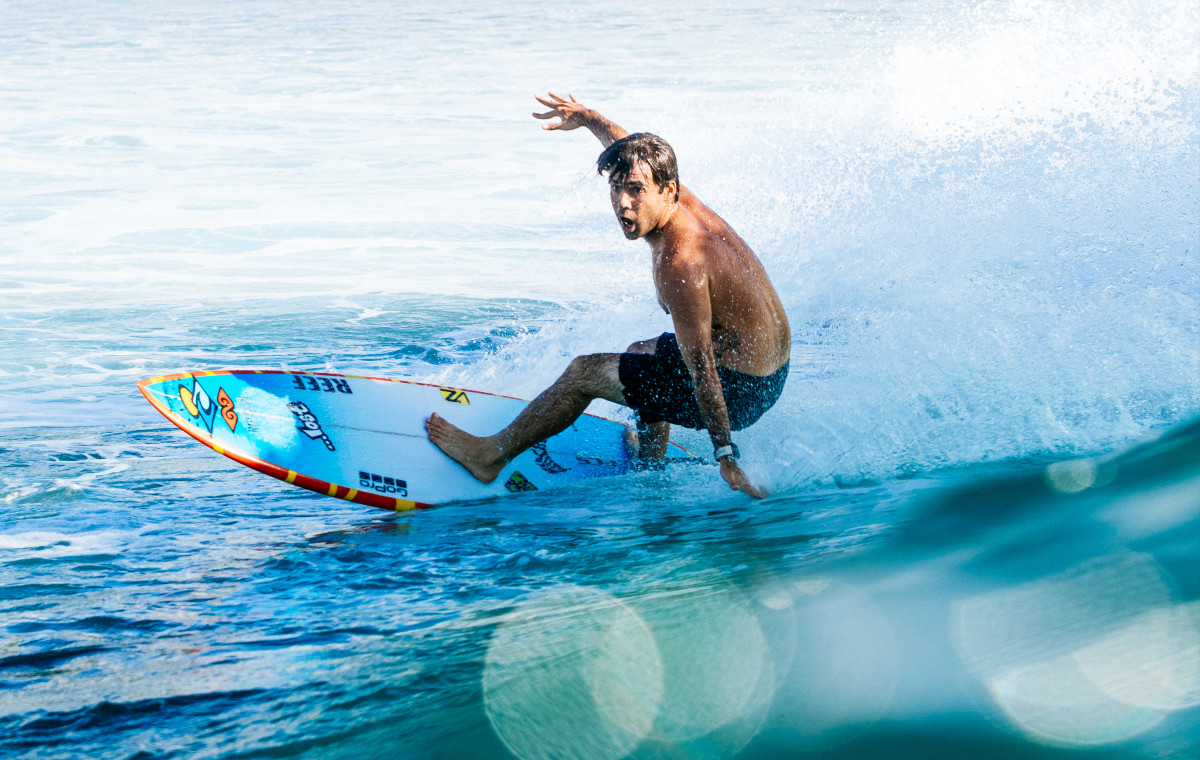During their icons heat at Bells Beach last month, Mason Ho and Mick Fanning both caught 16 waves apiece. Mason topped out at 23 miles per hour (which may have been jet ski-assisted) and covered more distance than the four-time Bell wringer by over half a mile.
Mick, however, was more efficient with his time. He only paddled 708 times (compared to Mason’s 1,238 strokes), demonstrating his spatial awareness of the Bells Bowl. Mick’s longest ride covered 862 feet, outlasting Mason’s longest by nearly 200 feet. How do we know these statistics? Not by some hawk-eyed observer, but by what they wore on their wrists, the Rip Curl Search GPS3.
Is surfing a numbers game? Depends on who you ask. One of the many great things about this sport/lifestyle/subculture is that your experience in the water doesn’t require a quantitative metric.
That said, numbers are pretty cool. And if you’re interested in stats, maps, training, fitness, or just one-upping your friends, Rip Curl’s new timepiece is as useful as a bar of wax. It’s got all the surf watch essentials and then some: Tide log, swell size, wind direction, wave count, top speed, water temp, distance covered, calories burned and even paddles taken are available on the colored display.

Rip Curl
More than 80,000 Search GPS watches have been sold since the first edition hit the market in 2014. But this latest version has been years in the making. Since the watch’s second iteration, the Search GPS2, released in 2018, Rip Curl has undergone major changes. Bought by a parent company, leadership shuffles, the covid pandemic, crossing I’s and dotting Ts — the kind of high-level stuff that happens at a multinational brand. But one constant during these changes is Michael Choma, Rip Curl’s senior designer of product, experience and innovation. He’s been with the company for over 20 years, and surf watches are his baby.
“We’ve had a long time between drinks, so to speak,” he said. “So we could really refine the GPS3. Speaking internally, crew were like, this is a significant jump.”
Construction-wise, the Search GPS3 has fewer screws, meaning it’s less likely to let water in. It’s lighter, thinner and stronger than past models. One thing I immediately appreciated about this thing: The buttons are unobtrusive and easy to use. No more “A, B, C, D” options to navigate the menu of options. And you’re not going to hit the buttons when you bend your wrist. The battery life is also solid — over 120 days when static and up to 10 hours while GPS tracking.

Rip Curl
To access the watch’s full arsenal, you’ll have to sign up for Rip Curl’s new subscription service, fittingly dubbed the Search GPS. It’ll run you just under $30 for a year. Once you’re in on the IOS app or computer, you can upload every session and see rides mapped out in satellite mode as well as the new community leagues and leaderboards (more on that later). On the free version, you can see personal records and achievements. The subscription will give you session data and a bird’s eye view of each ride on the app. Choma said that the money from the Search GPS signups will be used to improve both the current and future iterations.
“We have big ideas, and we want to keep iterating and improving,” Choma said of the new subscription model. “We want to keep the lights on post-purchase. We found that subscription was the way to do it.”

Rip Curl
The watch is compatible with Surfline, and that’s where the conditions and ratings come from. If you’ve got Surfline Premium and the Search GPS sub, your watch will automatically flag ridden waves on Surfline Camera Rewinds. Sync the watch with the app and you’ll get all the stats you can handle.
The watch itself, however, still shows you a lot. Most of the information is just a few taps away. The wave count feature is solid and mostly accurate. The only time it counted a ride in error was when I failed to pull back on a peak and got sucked rapidly back over the falls.
“You can do all the tracking and logbook through the watch,” Choma said. “We’ve tried to put a lot more on the wrist, rather than needing the companion app to do these things. But with the app, you get Surfline conditions and rewind, which is super cool. It adds a lot.”
This shift into fitness and location tracking marks a shift for the Australian company. Among the world’s large-scale surf brands, none have invested in intricate hardware or aimed for the fitness space like Rip Curl.

Rip Curl
“We want to bring more of the fitness aspect into people’s lives,” Choma said. “Back in 2014, that wasn’t so much a focus, especially for our core group, which is surfers. Surfing can be someone’s entire fitness regimen. It felt like step count, calories and distance weren’t what people were into, but in this decade, it’s mainstream now. So we wanted to do that, too.”
Personally, I found the paddle-to-wave-count ratio both intriguing and humbling. Stroking through the ocean hundreds of times, covering more than a mile of water for a little over 10 waves, seems daunting at first. But it also presented an engaging challenge — How many waves could I get with as little paddling as possible? How fast could I go while hanging 10? A more daunting task came to mind — How many miles and strokes could I rack up during punishing and current-ravaged Ocean Beach during a pulsing west swell? I’ll have to wait a few months to test that.
Choma said that the Rip Curl team toyed with making the watch “smarter,” but wanted to instead focus on better tracking regardless of wave size or speed. There’s a setting that allows the user to change the watch’s parameters to pick up short-period waves or slow rides it might otherwise miss.
“Just paddling or duck diving under a wave, you can move around quite a bit,” Choma said. “We want to give the surfer an accurate wave count. The environmental factors are really tricky with GPS. GPS doesn’t like to be underwater. That was a big hurdle to overcome with the original project.”
In conjunction with the release of the watch, Rip Curl is also launching “Boss of the Break,” a kind of competition for watch users to compare stats and climb a wave-specific leaderboard. Surfers subscribed to the Search app can accumulate scores based on a formula of wave speed, distance covered and time between ridden waves. Think Strava segments but in the lineup. But, to bring it back full circle, don’t get carried away with it. Not everything has to be a numbers game. But if you want to, this is a way to keep the tally. As Choma himself put it, “we’re not trying to take the fun out of surfing.”

